1.
Introduction
There are numerous problems wherein fractional derivatives (non-integer order derivatives and integrals) attain a valuable position [4,5,8,16,24,27,31,36,41,60,62,63,70]. It must be emphasized that fractional derivatives are furnished in many techniques, especially, characterizing three distinct approaches, which we are able to mention in an effort to grow the work in certainly one of them. Every classical fractional operator is typically described in terms of a particular significance. Many of the most well recognized definitions of fractional operators we can also point out the Riemann-Liouville, Caputo, Grunwald-Letnikov, and Hadamard operators [13], whose formulations include integrals with singular kernels and which may be used to have a check, as an example, issues involving the reminiscence effect [34]. However, within the years 2010, specific formulations of fractional operators have seemed inside the literature [42].
On the other hand, there are numerous approaches to acquire a generalization of classical fractional integrals. Many authors introduce parameters in classical definitions or in some unique specific function [45], as we shall do below. Moreover, in a present paper, the authors introduce a parameter and enunciate a generalization for fractional integrals on a selected space, which they name generalized K-fractional integrals, and further advocate an Ostrowski type inequality modification of this generalization. A verity of such type of new definitions of fractional integrals and derivatives promotes future research to establish more new ideas and fractional integral inequalities by utilizing new fractional derivative and integral operators. Integral inequalities are used in countless mathematical problems such as approximation theory and spectral analysis, statistical analysis and the theory of distributions. Studies involving integral inequalities play an important role in several areas of science and engineering. In [53], the authors established certain Grüss type inequalities and some other inequalities containing generalized proportional fractional and generalized proportional fractional with respect to another function. Khan et al. [3] studied several inequalities for the conformable fractional integral operators. Nisar et al. [44] presented Gronwall inequalities involving the generalized Riemann-Liouville and Hadamard K-fractional derivatives with applications. In [39], Kwun et al. proved integrals associated with Ostrowski type inequalities and error bounds of Hadamard inequalities involving the generalized Riemann-Liouville K-fractional integral operators. Especially, several striking inequalities, properties, and applicability for the fractional integrals and derivatives are recently studied by various researchers. We refer the interesting readers to the works by [30,37,52,55].
In 1937, Ostrowski [46] established an interesting integral inequality associated with differentiable mappings in one dimension stipulates a bound between a function evaluated at an interior point z and the average of the function ℏ over an interval. That is
holds for all z∈[ς1,ς2], where ℏ∈L∞(ς1,ς2) and ℏ:[ς1,ς2]→R is a differentiable mapping on (ς1,ς2). The constant 14 is sharp in the sense that it cannot be replaced by a smaller one. We also observe that the tightest bound is obtained at z=ς1+ς22, resulting in the well-known mid-point inequality. Ostrowski inequalities have great importance while studying the error bounds of different numerical quadrature rules, for example, the midpoint rule, Simpson's rule, the trapezoidal rule, and other generalized K-fractional integrals, see [19,21].
Almost every mathematician knows the importance of convexity theory in every field of mathematics, for example in nonlinear programming and optimization theory. By using the concept of convexity, several integral inequalities have been introduced such as Jensen, Hermite-Hadamard and Slater inequalities, and so forth. Exponentially convex functions have emerged as a significant new class of convex functions, which have important applications in technology, data science, and statistics. The main motivation of this paper depends on new Ostrowski inequalities that have been proved via K-fractional integrals and applied for exponentially convex functions. Ostrowski inequality offers some new estimation of a function to its integral mean. It is beneficial in error estimations of quadrature rules in numerical analysis. Some particular cases have been discussed, which can be deduced from these consequences.
Recall the definition of an exponentially convex function, which is investigated by Dragomir and Gomm [20].
Definition 1.1. ([20]) A positive real-valued function ℏ:K⊆R⟶(0,∞) is said to be exponentially convex on K if the inequality
holds for all ς1,ς2∈K and λ∈[0,1].
Exponentially convex function explored by Bernstein [14] in covariance formation then Avriel [11] established and investigated this concept by imposing the condition of r-convex functions. Dragomir and Gomm [20] proved the Hermite-Hadamard inequality by employing exponentially convex functions. Pal [47], Alirezai and Mathar [9] provided the fertile application of exponentially convex functions in information theory, optimization theory, and statistical theory. For observing various other kinds of exponentially convex functions and their generalizations, see [1,2,6,7,10,12,40,54,66,67]. Due to its significance, Jakšetić and Pečarić [28] used another kind of exponentially convex function introduced in reference [14] and have provided some applications in Euler-Radau expansions and stolarsky means. Our intention is to use the exponentially convexity property of the functions as well as the absolute values of their derivatives in order to establish estimates for generalized K-fractional integrals.
Inspired by the above works, we give a novel approach for deriving new generalizations of Ostrowski type that correlates with exponentially convex functions and generalized K-fractional techniques in this paper. One highlight is that our consequences, which are more consistent and efficient, are accelerated via the fractional calculus technique. In addition, our consequences also taking into account the estimates for Hermite-Hadamard inequality for exponentially convex functions by employing Remark 2.1. We also investigate the applications of the two proposed methods to exponentially convex functions and fractional calculus. Furthermore, we give some numerical examples to illustrate the convergence efficiency of our theorems. The proposed numerical experiments show that our results are superior to some related results.
2.
Preliminaries
In this section, we demonstrate some important concepts from fractional calculus that play a major role in proving the results of the present paper. The essential points of interest are exhibited in the monograph by Kilbas et al. [38].
Definition 2.1. ([38]) Let p≥1, u≥0 and ς1,ς2∈R with ς1<ς2. Then the Lp,u[ς1,ς2] space is defined by
In particular, we denote
and
Definition 2.2. ([32]) Let p≥1 and Φ be an increasing and positive function on [0,∞) such that Φ′ is continuous on [0,∞) with Φ(0)=0. Then the χpΦ[0,∞) space is the set of all the real-valued Lebesgue measurable functions ℏ∈L1[0,∞) such that
In particular, if p=∞, then ‖ℏ‖χ∞Φ is defined by
We clearly see that χpΦ[0,∞) becomes to Lp[0,∞) if Φ(z)=z, and χpΦ[0,∞) reduces to Lp,u[0,∞) if Φ(z)=1u+1zu+1.
Now, we present a new fractional operator that is known as the generalized K-fractional integral operator of a function in the sense of another function Φ.
Definition 2.3. Let ℏ∈χqΦ(0,∞) and Φ be an increasing positive function defined on [0,∞) such that Φ′(z) is continuous on [0,∞) with Φ(0)=0. Then the left and right generalized K-fractional integral operators of the function ℏ in the sense of the function Φ of order ρ>0 are defined by
and
respectively, where ρ∈C, ℜ(ρ)>0 and ΓK(z)=∞∫0λz−1e−λKKdλ (ℜ(z)>0) is the K-Gamma function [18].
Remark 2.1. From (2.1) and (2.2) we clearly see that
(1) They turn into the both sided generalized RL-fractional integral operators [38] if K=1.
(2) They reduce to the both-sided K-fractional integral operators [43] if Φ(z)=z.
(3) They lead to the both-sided RL-fractional integral operators if Φ(z)=z and K=1.
(4) They become to the both-sided Hadamard fractional integral operators [38] if Φ(z)=logz and K=1.
(5) They degenerate to the both-sided Katugampola fractional integral operators [33] if Φ(z)=zββ (β>0) and K=1.
(6) They turn out to be the both-sided conformable fractional integral operators defined by Jarad et al. [29] if Φ(z)=(z−a)ββ (β>0) and K=1.
(7) They change into the both-sided generalized conformable fractional integrals defined by Khan and Adil Khan [35] if Choosing Φ(z)=zu+vu+v and K=1.
3.
Main results
In what follows, we assume that ς1,ς2∈R with ς1<ς2, I=[ς1,ς2] is a finite or infinite interval, ℏ is a positive integrable function defined on I and Φ is an increasing and positive function on (ς1,ς2] such that Φ′ is continuous on (ς1,ς2).
Now, we are going to present several new Ostrowski-type inequalities for the exponentially convex functions via the generalized K-fractional integrals.
Theorem 3.1. Let ρ,δ,K,M>0, I∘ be the interior of I, and ℏ:I→R be differentiable on I∘. Then the inequality
holds if Φ′(z)≥1 and |(eℏ(λ))′|≤M for all z,λ∈I.
Proof. It follows from the monotonicity of Φ that
for λ∈[ς1,z].
From (3.2) and the hypothesis |(eℏ(λ))′|≤M we clearly see that
and
After integrating above inequalities and then using Definition 2.3 we get
and
Inequalities (3.3) and (3.4) lead to the following modulus inequality
Analogously, we have
for λ∈[z,ς2].
Making use of (3.6) and adopting the same procedure as we did for obtaining (3.5), we get the following modulus inequality
Therefore, inequality (3.1) follows from (3.5) and (3.7).
Corollary 3.1. Letting ρ=δ. Then Theorem 3.1 leads to
Corollary 3.2. Let K=1. Then Theorem 3.1 gives the Ostrowski-type inequality as follows
Corollary 3.3. Letting Φ(z)=(z). Then Theorem 3.1 reduces to the following Ostrowski-type inequality for K-fractional integral
Corollary 3.4. Let Φ(z)=(z) and K=1. Then Theorem 3.1 leads to
Corollary 3.5. Let Φ(z)=(z) and ρ=δ=K=1. Then Theorem 3.1 becomes to the Ostrowski-type inequality
In addition, we can get more results by use of Theorem 3.1 as follows.
(Ⅰ) By choosing z=ς1 and z=ς2 in (3.1), then adding the concluding terms, we have
(Ⅱ) By choosing ρ=δ in (3.8), then we have
(Ⅲ) By choosing Φ(z)=z in (3.9), then we get the Hermite-Hadamard type inequality for K-fractional integrals
Theorem 3.2. Let ρ,δ,K,M>0, m≤0, ℏ:I→R be differentiable on I∘, and Φ:[ς1,ς2]→R be a strictly increasing function such that Φ′(z)≥1, |(eℏ(λ))′|≤M and m≤(eℏ(λ))′≤M for all z,λ∈[ς1,ς2]. Then we have the inequalities for generalized K-fractional integrals as follows
and
Proof. It follows from (3.2) and the hypothesis in Theorem 3.2 that
and
After integrating above inequalities and by using Definition 3.2 we get
and
Analogously, we have
and
Therefore, inequality (3.11) follows from (3.13) and (3.15), and inequality (3.12) follows from (3.14) and (3.16).
Remark 3.1. Theorem 3.2 leads to the conclusion that
(i) If K=1, then we attain the Ostrowski-type inequality for GRLFI.
(ii) If Φ(z)=z, then we get the Ostrowski-type inequality for K-fractional integral.
(iii) If K=1 and Φ(z)=z, then we obtain the the Ostrowski-type inequality for RLFI.
(iv) If m=−M, then after some calculations it constitutes Theorem 3.1.
Theorem 3.3. Let ρ,δ,K,M>0, m≤0, ℏ:I→R be differentiable on I∘, and Φ:[ς1,ς2]→R be a strictly increasing function such that Φ′(z)≥1, |(eℏ(λ))′|≤M and m≤(eℏ(λ))′≤M for all z,λ∈[ς1,ς2]. Then one has the generalized K-fractional integrals inequalities
and
Proof. Inequality (3.17) follows from (3.13) and (3.16), and inequality (3.18) follows from (3.14) and (3.15).
Theorem 3.4. Let ρ,δ,K,M>0, I∘ be the interior of I, and ℏ:I→R be differentiable on I∘. Then the inequality
holds if Φ′(z)≥1 and |(eℏ(λ))′|≤M for all z,λ∈I.
Proof. It follows from the monotonicity of Φ that
for λ∈[ς1,z].
Inequality (3.20) and the hypothesis on (eℏ)′ lead to
and
Integrating above inequalities and using the Definition 2.3 lead to
and
From (3.21) and (3.22) we obtain the modulus inequality
Again, making use of the fact the monotonicity of Φ we have
for λ∈[z,ς2].
Using (3.24) and adopting the same procedure as we did for obtaining (3.23), we get
Therefore, inequality (3.19) follows easily from (3.23) and (3.25).
Remark 3.2. From Theorem 3.4 we clearly see that
(i) If K=1, then we get the Ostrowski type inequality for the GRLFI.
(ii) If Φ(z)=z, then we attain the Ostrowski type inequality for the K-fractional integral.
(iii) If Φ(z)=z and K=1, then we have the Ostrowski type inequality for the RLFI.
4.
Examples
The generalized K-fractional integral operator is very a useful operator in the theory of fractional calculus and its applications since it is already mentioned that it is eligible to use it as a solution of fractional order differential equations, integral equations and fractional Schrödinger equations. To show the accuracy of our results, we present two examples to support our obtained results in the previous section.
Example 4.1. Let K=1, ς1=0, ς2=π2, ρ=1, δ=3, M=1, ℏ(z)=ln(cosz), and Φ(z)=sinz. Then all the assumptions in Theorem 3.1 are satisfied. It is not difficult to verify that
and
Adding the above equations, we get the left-hand side term of (3.1) as follows
On the other hand, we have
It is nice to see that the following implications hold in (4.2) and (4.3)
Example 4.2. Let K=1, ς1=0, ς2=4, ρ=12, δ=52, m=−6, M=2, ℏ(z)=2ln(z−3) and Φ(z)=2(z+3). Then all the assumptions of Theorem 3.3 are satisfied, and Theorem 3.3 leads to the Ostrowski type inequalities
and
5.
Applications
A real-valued function M:(0,∞)×(0,∞)→(0,∞) is said to be a bivariate mean [15] if min{a,b}≤M(a,b)≤max{a,b} for all a,b∈(0,∞). Recently, the properties and applications for the bivariate means and their related special functions have attracted the attention of many researchers [17,22,23,25,26,48,49,50,51,56,57,58,59,61,64,65,68,69].
Let μ1,ν1>0 with μ1≠ν1. Then the arithmetic mean A(μ1,ν1), harmonic mean H(μ1,ν1), logarithmic mean L(μ1,ν1) and n-th generalized logarithmic mean Ln(μ1,ν1) are defined by
respectively.
In this section, we use our obtained results in section 3 to provide several novel inequalities involving the special bivariate means mentioned above.
Proposition 5.1. Let η1,η2>0 with η2>η1. Then
Proof. Let ρ=K=1 and eℏ(z)=ez. Then the desired result follows from the assertion (III) of Theorem 3.1.
Proposition 5.2. Let η1,η2>0 with η1<η2. Then
Proof. Let ρ=K=1 and eℏ(z)=1z. Then the desired result can be derived from the assertion (III) of Theorem 3.1.
Proposition 5.3. Let η1,η2>0 with η1<η2. Then
Proof. Let ρ=K=1 and eℏ(z)=z2. Then the desired result can be obtained from the assertion (III) of Theorem 3.1.
Proposition 5.4. Let η1,η2>0 with η1<η2. Then
Proof. Proposition 5.4 follows easily from the assertion (III) of Theorem 3.1 and eℏ(z)=zn together with K=ρ=1.
6.
Conclusion
In this paper, we proposed a novel technique with two different approaches for deriving several generalizations for an exponentially convex function that accelerates with generalized K-fractional integral operator. We also established strong convergence theorems for Ostrowski type inequalities via exponentially convex functions. By choosing different parameter values K and Φ, we analyzed the convergence behavior of our proposed methods in form of corollaries. Another aspect is that, to show the effectiveness of our novel generalizations, our results have potential applications in fractional integrodifferential, difference equations and fractional Schrödinger equations. Numerical examples show that our findings are consistent and efficient. Finally, we remark that the framework of the generalized K-fractional integral operator, it is of interest to further our results to the framework of Riemann-Liouville, Hadamard and conformable fractional integral operators.
Acknowledgments
The authors would like to thank the anonymous referees for their valuable comments and suggestions, which led to considerable improvement of the article.
The research is supported by the Natural Science Foundation of China (Grant Nos. Grant Nos. 11701176, 61673169, 11301127, 11626101, 11601485).
Conflict of interest
The authors declare that they have no competing interests.











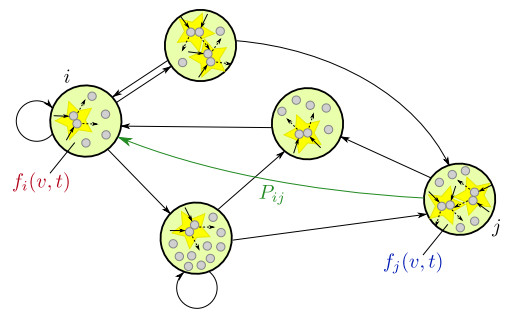
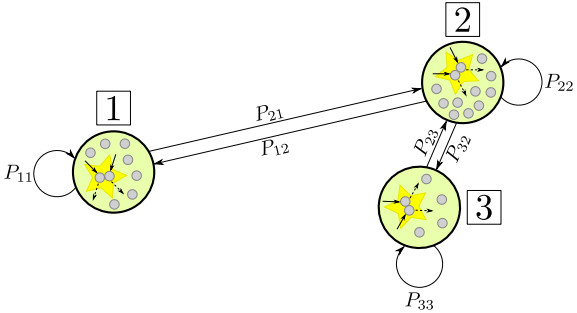
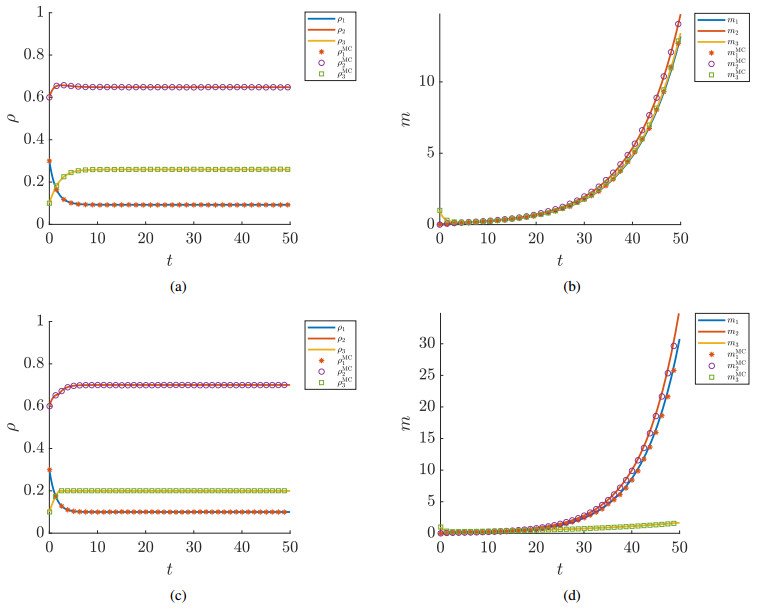

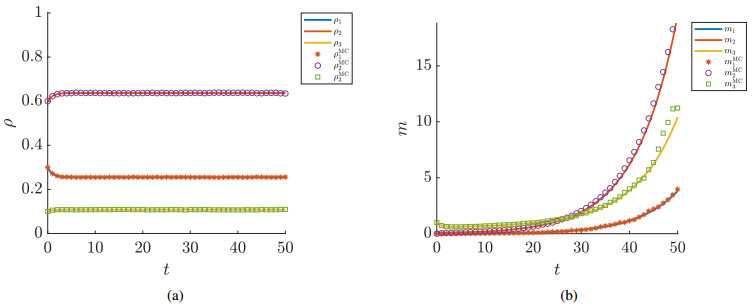
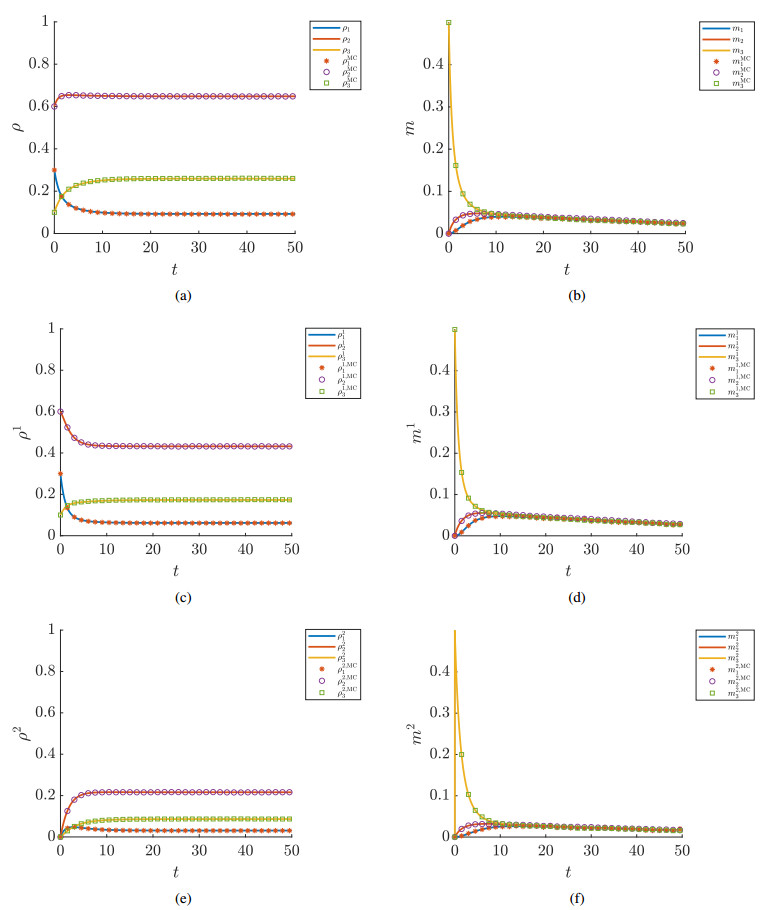
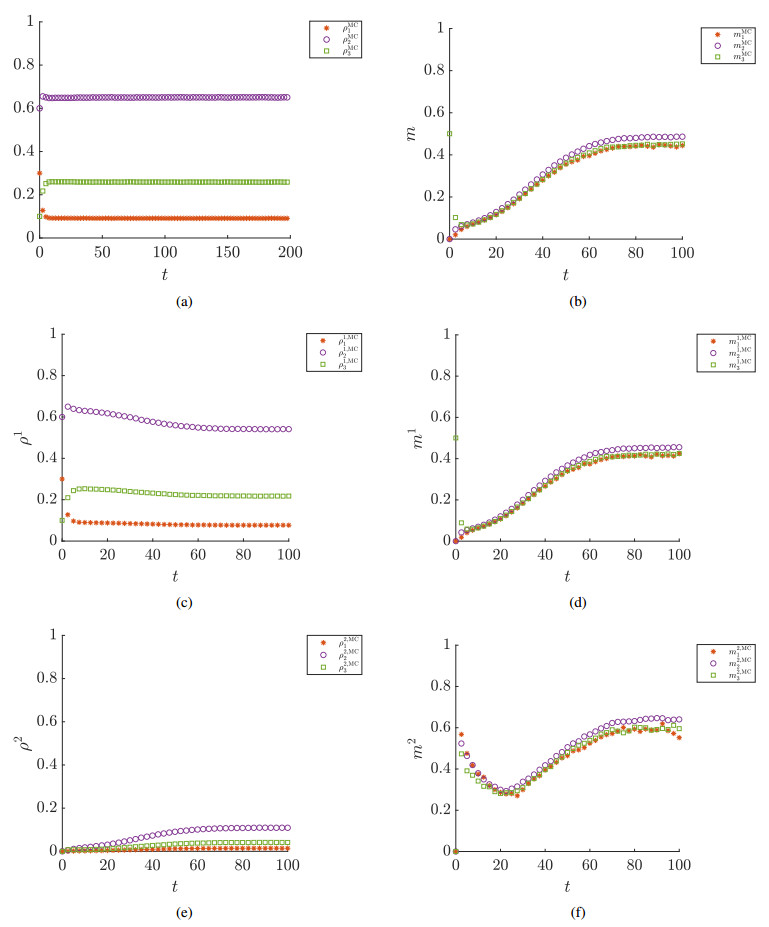


 DownLoad:
DownLoad: